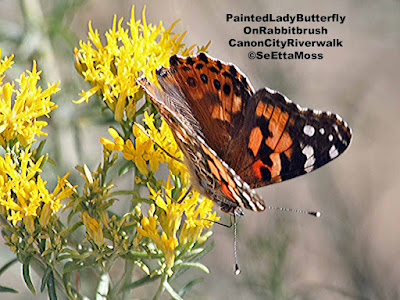Fritillary species butterfly

As I noted in my post on Painted Lady migration, I saw a fritillary species butterfly in the same rabbitbrush shrub in which I found 8 Pained Ladies (must have been some great flowers on that shrub) along the Canon City Riverwalk. As I am a novice at butterfly identification, I checked to see which fritillaries are found in Colorado and found that there were a number of this family that occur here and several look like this butterfly. So I will have to call this a fritillary species. SeEtta

